Introduction of Mortar Mix Ratio
Important Point
Mortal is necessary when working with brickwork, metal, and block. In its basic form, mortal is made with a blender and sand with water.
But most contractor also joins hydrated lime. By changing the price of every item in the mix, you can change the mortar’s goods.
It is termed the mortar blend ratio. The different steps of concrete you can design are each selected by a letter.
The most usual concrete is type N, O, S, M, and k. you can cement different types in a bag or blend your possess.
Cement is a grey powder that works as an attached concrete in a building. It uses water, which reacts when blended with water to form a mixture.
The mixture then dries sets and grows successively stronger amid an activity called dry. This activity normally takes about 28 days to perfect.
If you blend cement with strands and water, you get mortal. Join in some stones and mortar turns into the material.
Mortar is grown in lamina to set stone, brick, and buildings. Or as a bed for location brick and tile.
It also works to fix the brick, tile, and tone layer to the barrier and as a divide filler. It’s powerful, sticky, and simple to the job with.
Because concrete is a mixed material, its goods depend highly on the basic work to make it.
It’s essential to buy the accurate mortar for the estimate you’re working on or to work the right mortar mix ratio if you make your possession.
In this article, we’ll agree on the most usual blender types, how to mix them, and how to work them in your next estimate.
What Is a Mortar Mix (Blend) Ratio?
Mortar comprises three key items; cement powder (normally Portland cement), lime, and sand. While most mortars involve all three items, the price of all items in a concrete mix ranges.
By fixing the ratio of items, you also effectively change the concrete.
A mortar mix ratio ensures that the blend can be truly converted whenever, regularly. Mortal blend ratios are a recipe that tells you how to make a different type of concrete.
Such as a recipe, and mortar mix, ratios are reported in time of bits. For the sample, 1 part cement, 1 part lime, and 6 bits sand is a usual concrete blend.
Item bits can be regular with various-sized bags. For sample, 1 part could be comparable to a spade, a gallon, a bucket, or a truck full.
But however you choose as you’re estimate tool, it has to work for every item.
For the sample, if you use a 1-gallon bucket to estimate an item, then a 1, 1, 6 mortar blend ratio means one liquid unit of cement, 1 gallon of lime, and six liquids of sand.
Why Is Lime Added to Mortar?
The essential mortar blend is just sand and cement. But lime is also worked by most contractors, and ready blend mortar is built because it gives the concrete some profit.
Attach hydrated lime to sand and cement, giving the blender more adjustable and break support. It also makes the concrete peaceful for the job and more water-resistant.
Lime assists in stopping the sand and cement from dividing, which produces a more consistent result.
Overall, mortar blends seat lime finish better and are quite to job with than blenders made with cement and sand alone.
Common Types of Mortar Mix Ratios and Their Uses
There are a wide collection of mortar mix ratios with various uses. The four main types that work the most are N, O, S, AND M.
Each of these main types has a different attractive backbone, stickiness, break protection, and bending power, making them better for some requests than others.
It’s essential to know what all type does and how to make them so you can use the right concrete for your project.
Type N Mortar
Type N this most usual mortar blend work is building. It’s a quality recipe that’s powerful, durable, break long-lasting, and sticky.
We use it for every above-order project, counting slab and stone places. Layering blocks and fixing veneer.
Type N is a big all-around concrete because it’s bright. Long-lasting, easy to work with, and can be worked interior and out.
- Type N mortar has high protection against heat and climate.
- It works for the above set outside and inside projects.
- It can be worked in with brickwork and soft stone country house projects because it’s not overly strong.
- Type N’s high contracting power of around 750 psi is always loading projects.
The most usual type N mortar mix (blend) ratio is 1 part cement, 1 part lime, and 5 to 6 parts sand. Quikrete buys a bagged type N mortar blend which you can sell at any storehouse or Lowes for around $7 a bag. It’s sold in 60lb bags.
Concrete also makes a different type of N, particularly for fixing veneer stone. It sells 80lb bags for around $10 per bag.
Type O Mortar
Type O is a common mortar blend used in interiors for non-bearing estimates. It’s weak and few long-lasting than type N and can’t resist temperature change or climate.
Type O is softer and more breakable than most other concrete.
- Type O mortar is used inside.
- Has a less than 350 psi pack power which needs to be stronger for hamper-style projects.
- Used above class.
- A shade mortar than type N.
- Used for repair or similar repair jobs.
The mortar mix ratio to make type O is 1-bit cement, two parts lime, and 8 to 9 parts sans. Type O has the same price of cement as type N but has more lime and sand.
It lessens the concrete part and makes it more breakable. Still, it’s quite a great blend for inside use, such as assembling brickwork and stone or building replacement.
Flex brick makes type O mortar in a blend of 11lb and 45lb tubs. It costs around $30 for the 11lb tub and about $70 for the 45lb holder. But it does not come in a start blend bag.
Type S Mortar
Type S mortar is mostly for civil projects such as sewers and confined space handles. It’s a professional quality mortar a d, not something that normally works in household projects.
Once type S mortar is placed, it has a big soft bond power and high condensing power ‘of 1,800 psi. It is powerful enough for below-grade requests and some load support projects.
However, it’s too weak for some load-bearing jobs. Type S mortar is powerful enough to continue soil strength and water.
It makes it a great option for veranda and masonry outside.
If your idea on fix stone or brickwork veneer on a below-grade outside, type S as the concrete you’d use.
The mortar mix ratio to make type S is two parts cement, 1-bit lime, and 8 to 9 parts sand.
Type S is a very similar concrete ratio to type O; it has small lime and more cement. This little change gives type S its high condensing and tensile power.
Secret buyer a type S mortar blend in 60 bags for around $7 per bag. Concrete buys a type S mason blend in 80lb bags for around $10 per bag.
Type M Mortar
Type M is the last of the four most usual concrete types. It’s the inessential blender with a compressive power of around 2,500 psi.
It makes it powerful enough for the below-class project and some loading jobs.
Type M mortar blend is examining commercial grade. It works for driveways, breast walls, and below-grade outside.
Type M is an excellent option if you require power concrete for below below-grade job.
But it has a bad union and needs a better seal. It is proper to its high cement and sand ratio and low cost of lime.
Type M mortar works when a construction must resist high-weight or sidelong loads.
It’s also an excellent option for actual stone projects where the compressive power of the stone is greater than 2500 PSI.
Because of type M’s goods. You should not be used above grade in places exposed to the climate.
The mortar mix ratio to make type O is 4 bits cement, 1-bit lime, and 12 to 15 parts sand.
The concrete type M trading grade mortar blend is sold in 80lb bags for around $10.
Type K Mortar
Type K mortar is more type that’s first used in rebuilding jobs. Its very weak and delicate concrete makes it protected to use on significant masonries such as brickwork and stone.
It has very little compressive power and copies the touch of the old blender, even though it’s a new outcome.
Because it’s so cool, type K won’t crack old brickwork and stone. It only has around 75 psi. The mortar mix ratio to make type O is 1 part cement, 3 bits lime, and 10 to 12 parts sand.
Type K concrete isn’t sold blend or in bags, so it’s a custom blend on the area by the constructor doing the rebuilding work.
Also Read: All About Concrete Mix Ratio | How Concrete Is Made | Concrete Mix Ratio of Ingredients
Useful Article for You
- What Is Composite Wood
- What Is the Difference Between a Shower Pan and a Shower Base?
- What Is Raft
- What Is a Window Panel
- What Is Rebar Made Of
- What Is Crane
- Lime Mortar Vs Cement Mortar
- What Is a Frame Structure
- What Is the Measurement for a Queen Size Bed
- What Is Considered Livable Space
- What Is One Way You Can Save Electricity?
- What Is Mdf Mean
- What Is a Bundle of Shingles
- What Is a Gallon of Water Weigh
- What Is Window Sash
- What Is a Sieve Analysis
- What Is the Little Black Diamond on a Tape Measure
- What Is the Difference Between a Bolt and a Screw?
- What Is Overhang
- What Is Sand Blasting
- What Is a Walk in Basement
- What Is a Monolithic Slab
- What Is a Cold Joint
Which Mortar Should I Use for Block Walls, Brick, Tile & Stone?
The type of mortar you work with should equal the project and area. Some concrete can only work the exterior, some interior, and some are used in the match.
Type N is the most common type of concrete used for assembling brickwork, blocks, and stone walls. Still, if the stones are the weight, you could also use type S.
It’s like type N but has more compressive power. But if the barrier sits below the class, you can use type M for the below class part.
If you fix brickwork or stone veneer work, a type N veneer blends with concrete. It’s powerful, long-lasting, sticky, and durable for the piece. But quality type N is also a job barrier for veneer jobs.
When you require more compressive power for a driveway, examine using a type S. It has bigger compressive power than type N.
A driveway may hold weight trucks that need more compressive power to resist breakage. If you’re stacking custom brickwork or stone, use type N.
it has a fair price of compressive power with climate and break resistance. It’s an excellent all-around concrete that’s simple to work with.
The Best Mortar Mix (Blend) for Pointing
The quality blend for barrier pointing is five parts sand, 1 part cement, and 1 part lime. This mortar mix ratio produces a type N mortar with a powerful 750 psi. If you require more power, join more cement and sand.
At eight parts sand, two parts cement, and 1 part lime, you produce a type S concrete with 1800 psi. It is normally a little power for points, so I use a blend somewhere in the center.
Six parts sand, 1 ½ parts cement a 1 part lime will give you about 1000 psi.
How to Make Dry-Pointing Mortar?
In some essentials, you can require cement for pointing tile, brickwork, or gravestone ground tavern.
The top mortar mix ratio for a bare-pointing blend is three parts sand to 1 point cement. Don’t attach any water to the blend.
First, blend the sand and cement thoroughly and then pull it into the tavern. Full time it will solidify simply from the liquid in the air and floor.
The Mortar for Brickwork
The top concrete for brickwork is the mortar ratio 1:1:6 (1 part cement, 1 part lime, and 1 part sand). It can be swapped Depending on the barrier’s grounds.
For an inside brickwork barrier that’s not heavy bearing, work the mortar blend ratio 1:2:9. But if the brickwork is heavy bearing or exterior, work a 1:0:5:4.5 ratio.
By lowering the lime and sand in the blend, you also grow the cement that is powerful.
Useful Article for You
- What Is Quarrying
- What Is a Concrete Slump Test
- What Is a Weir
- What Is Road Made Of
- What Is a Cantilever?
- What Is a Contour
- What Is a Rolled Curb
- What Is an Abutment Bridge
- Gray Green House
- Identify the Zero-Force Members in the Truss
- Bridge Pier
- Monolithic Concrete
- Wall Panel Bathroom Ideas
- Construction Companies in America
- How Bridges Are Made
- Density of Concrete G Cm3
- Concrete Wall Treatment
- Standard Us Brick Size
- Drywall Ceiling Repair Cost
- Micropile
- Roof Tiles Types and Prices
- Weep Holes
The Best Mortar for Stone Walls
The final element in every mortar mix ratio is water. If you don’t get the water quantity accurate, your concrete could be derelict.
You require just enough water to operate all the cement, not a fall. Attach too much water to the mortar blend, and it’ll be too watery concrete you handle to fix will be soft and delicate.
On the other mange, if you attach it too small, the blender will be too simple, and some of the cement won’t operate.
The concrete with a simple break or lessen. The two of these could be better in the long period.
Correctly blend mortar mix should be fine but not watery. It should carry the heavy brickwork and stone and close while continuing a join as you stack concrete and construct up heavy.
Start stacked on best if you join open to lower under the heavy new concrete. The concrete is too wet. You require more water if the mortar is heavy-knit and too dry to grow correctly.
Mortar Additives
No difficulty with the type of mortar you work with or its mix ratio. Also, it can be used to give blend-specific properties.
Here Are Some Additives You Can Use with Any Concrete Mix.
- Color: The masonry color comes in a bag of dust attached to the wet concrete mix.
- Frost proofer: If you’re working in cool, use some frost proofer to assist in stopping the concrete from cold.
- Accelerant: An accelerant paces up the fixed time of your blender. But it can also debilitate it, so use them with effort.
- Strength: Chemical extra can gain the power of a mortar blend.
- Flexibility: Some extras can gain concrete flexibility, which assists them in resisting breaks.
Mortar Mixing Equipment
Most masons will blend their possess mortar for grate brickwork projects. Nagged concrete is good for little to average-size works but can get high-priced if you require a lot.
And even when you work with bagged concrete, you must attach water and mix it yourself.
To Mix Mortar, You Require the Following Articles:
- Mixer: This could be a truck, plastic tub, blend board, or strong cement mixer.
- Spade or shovel: Work to mix mortar in a truck or tub. It’s also excellent for shoveling elements in the correct mix ratios.
- Brick towel: used to calculate and mix a small quantity of mortar.
- Bucket: A 5-gallon bucket is excellent for calculating out elements.
- Utility knife: You’ll require a sharp cutter to cut the concrete bags if you use them.
Safety Equipment
Mixing mortar or any cement build outcome can be very important. Cement is caustic with big pH stability, so breathing it in and being happy can damage your health.
Before you open mixing concrete, make definitely to have the following security:
- Mask
- Goggles
- Gloves
Things to Consider When Mixing Mortar
There are things you should consider anytime you blend or job with mortar.
- Temperature: You should never blend or fix mortar when the temperature is at or below cold.
- Bagged mixes: If you need peace working with blend ratios, use bagged concrete ideally. All the elements have already been calculated in the exact quantity and blended for you.
- Mixing by hand vs. equipment: Using a strong blend gives a much more compatible blend. Mixing little batches by hand is excellent, but a powered blender is much better, especially for big projects.
- Water: Getting the proper water level is optional when working with concrete. Both too much and too little water will weaken the mortal and cause it to the wrong failure.
Mortar Mix Ratio
The standard ratio for average mortar mix is 3:1 or 4:1 for bricklaying. If you are using a pointing mix, then you should have a ratio of 1:4 or 1:5 mortar to sand. As for concrete, it depends on the strength you need it to be at. Usually, it is good practice to mix concrete at 1:2 mix to materials.
Sand and Cement Mix Ratio
What is the ideal cement mix ratio? As per the experts, the safest cement mix ratio for all kinds of concrete used in different construction purposes is 4:2:1. It means 4 parts of crushed stones mixed with 2 parts of sand and 1 part of cement will create the ideal cement mix to prepare concrete for all purposes.
Cement Sand Ratio for Plastering
The ratio of cement and sand should be 1:5. That is 1 part cement and 1 part of sand should be used for plastering. Besides, the plaster’s overall thickness should be 20mm for 2 coats. The dry density volume of cement is 1440Kg/m3.
Portland Cement Mix Ratio
MIXING: MIXING INSTRUCTIONS Use the following mix proportions to make general purpose concrete: Mix together • 1 part cement (This bag contains 94 lbs. or 1 cu. ft.). 2 parts concrete sand or general purpose sand (160-180 lbs.). 3 parts gravel or stone (240-300 lbs., 3⁄4” recommended).
Cement Lime Sand Mortar Mix Ratio
Cement lime mortar may be made at ratios of 1:0.25:3 (cement:lime:sand) for higher strength and durability down to 1:3:12 for a weaker mix capable of accommodating more movement. Cement lime mortar should not normally be used below the damp proof course (dpc).
Type S Mortar Mix Ratio
This uses a 2 / 1 / 9 mix and results in a mortar with a 1,800 psi compressive strength. Type S is used for below grade work and in such areas as masonry foundation walls, brick manholes, retaining walls, sewers, brick walkways, brick pavement and brick patios.
Lime Mortar Mix Ratio
The mix is typically 1 part lime : 2.5 parts sand. Measuring the material must always be with a gauging box or bucket. A shovel is not acceptable since quantities are too inconsistent. Lime mortars mixed in drum mixers can be prone to balling.
Mortar Ratio for Plastering
The ratio of cement and sand should be 1:5. That is 1 part cement and 1 part of sand should be used for plastering.
Type N Mortar Mix Ratio
Type N mortar mix has a medium compressive strength and it is composed of 1 part Portland cement, 1 part lime, and 6 parts sand. It is considered to be a general-purpose mix, useful for above grade, exterior, and interior load-bearing installations.
Mortar to Water Ratio
The standard mortar mixing ratio for thinset is one part mix to four parts water. Pour the water in the mixing container. Add the mix to the container. Blend for about five minutes.
What Is the Cement to Sand Ratio for Mortar?
The standard mortar mixing ratio is one part Portland cement to three parts sand.
What Is the Ratio of Sand to Cement for Mortar?
For a standard mortar mix this normally on a ratio basis (usually around 3 or 4 parts building sand to 1 part cement) recommendations vary – but you don’t want the mixture to be too wet or too dry.
Why Is Lime Added to Mortar?
Lime provides high water retention that allows for maximum early curing of the cementitious materials. High initial flow which permits easy complete coverage of masonry units. The low air content of cement-lime mortar increases bond strength.
Mortar Ratio for Stone Masonry
Standard and ratio of mix for all mortar shall be M-400 (1:3), M-300 (1:4), M-250 (1:5) and M-200 (1:6). Provide minimum water. Mortar mixing shall be done in a mechanical mixer unless the Engineer specifically permits hand mixing.
Portland Cement to Sand Ratio
The standard mortar mixing ratio is one part Portland cement to three parts sand. This varies depending on the type of mortar you need for your job. Add the sand to the concrete and use a mortar trowel or hoe to fold them together. Ensure the concrete and sand are completely mixed.
Crack in Mortar Between Bricks
If the mortar cracks are from general wear and tear, you can repair them through a process called tuckpointing. Tuckpointing involves removing the outer layer of mortar and replacing it with new, color-matched mortar. This boosts the structural integrity of the brickwork and eliminates visible mortar cracking.
Like this post? Share it with your friends!
Suggested Read –
Originally posted 2023-09-05 18:31:59.
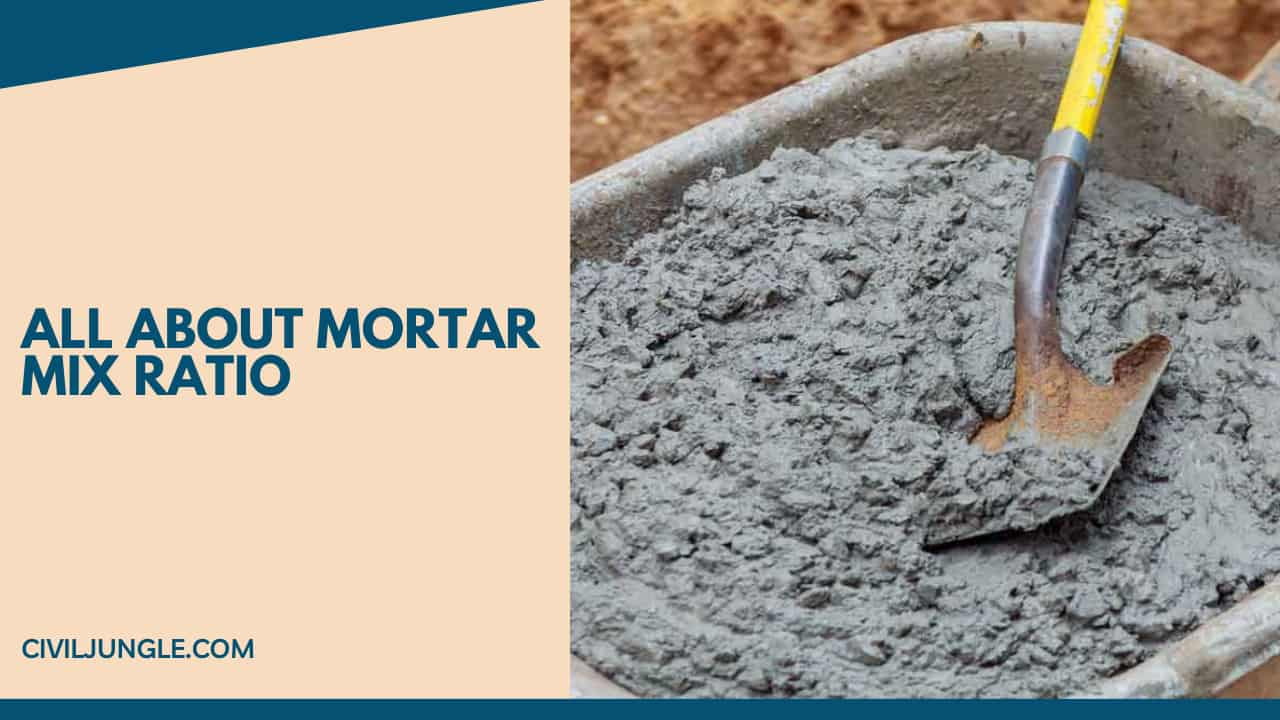

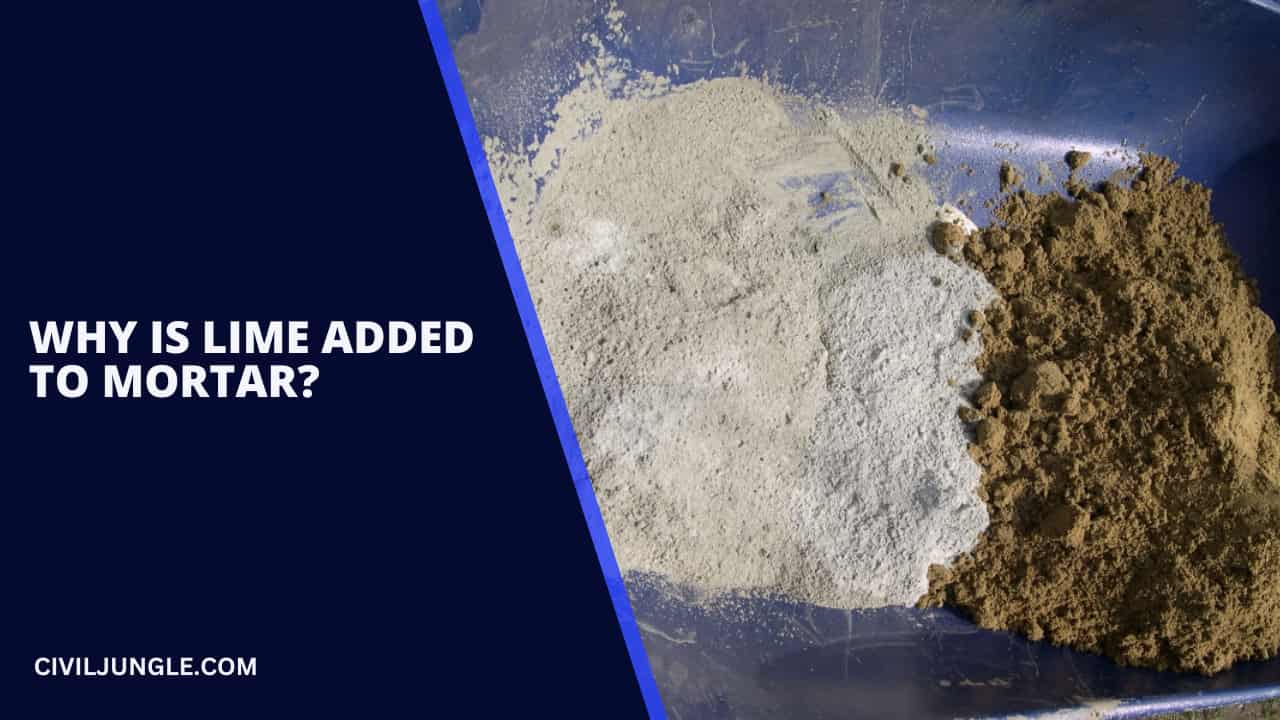
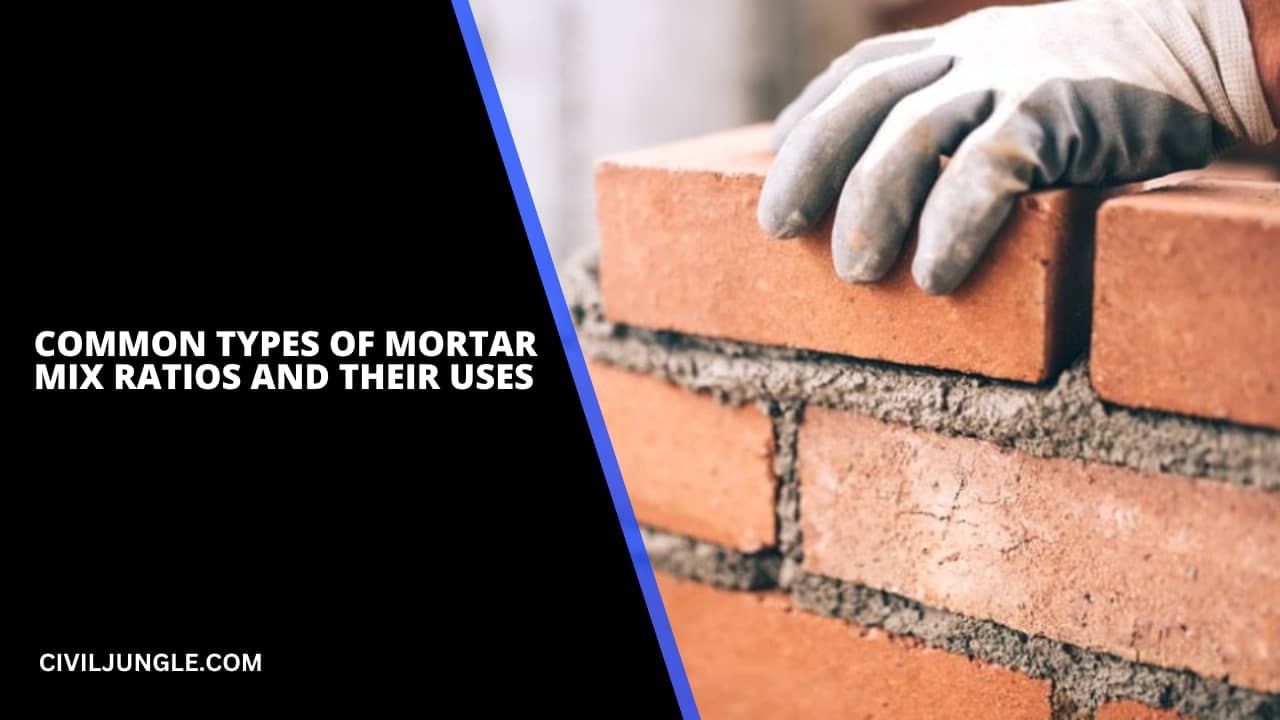
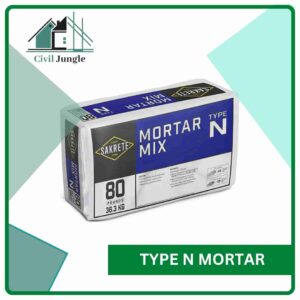
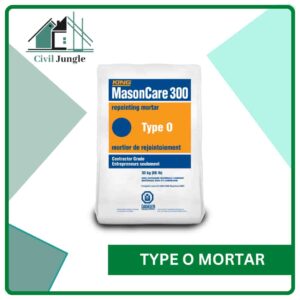
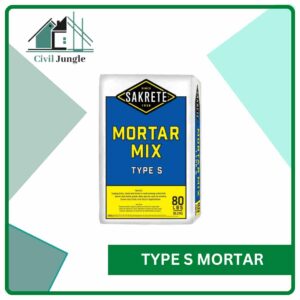
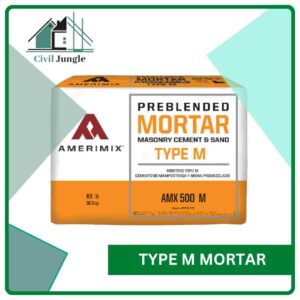
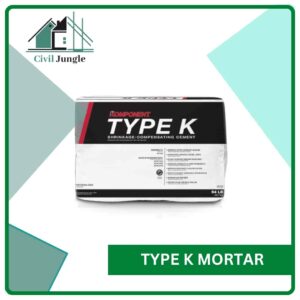
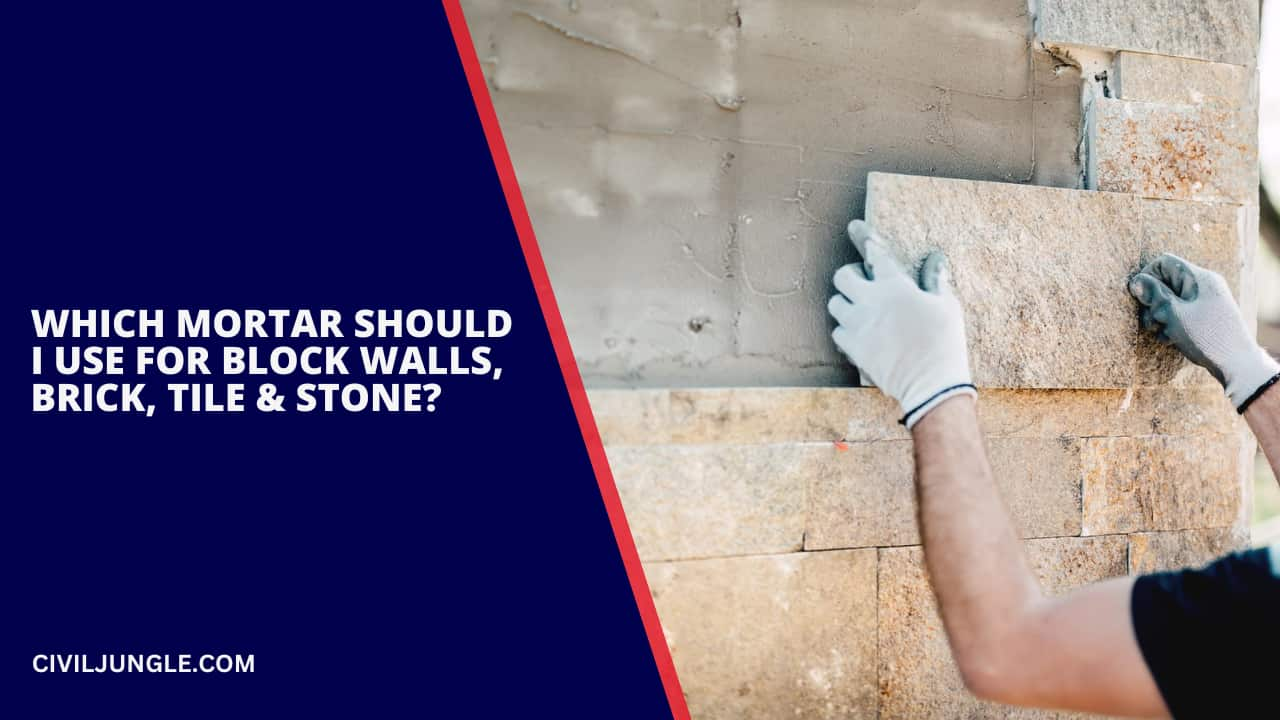
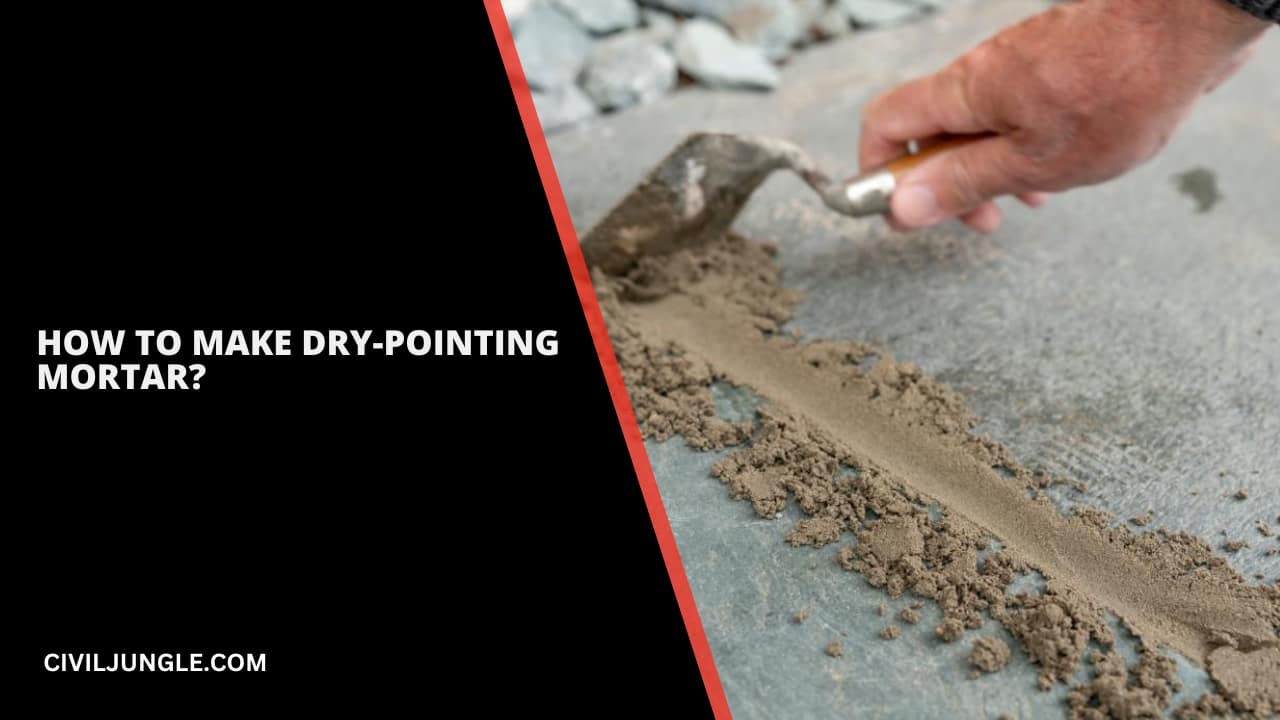
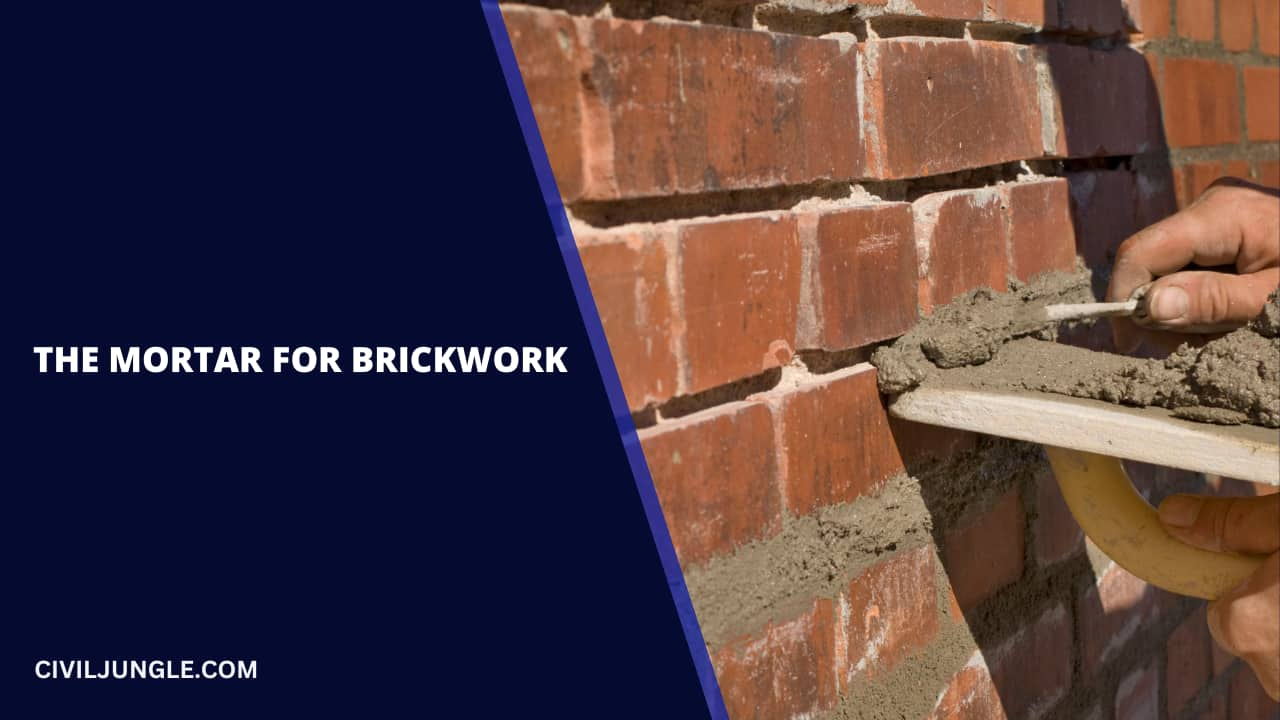
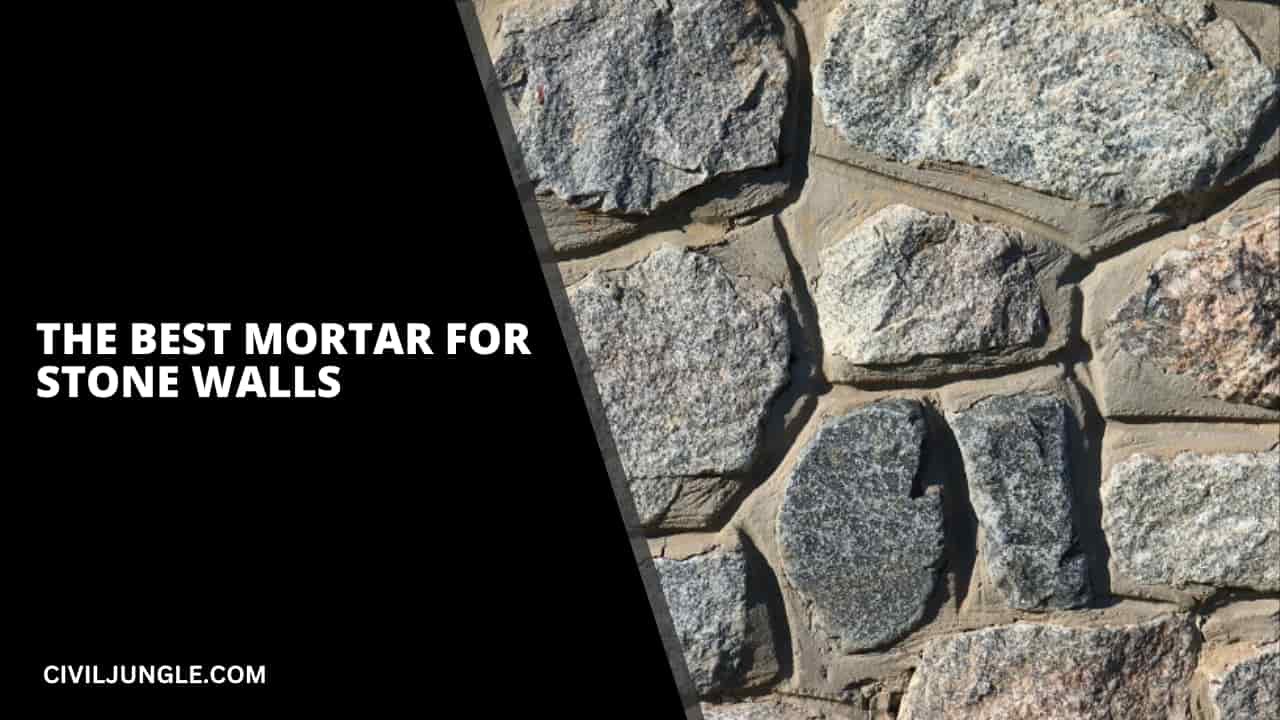


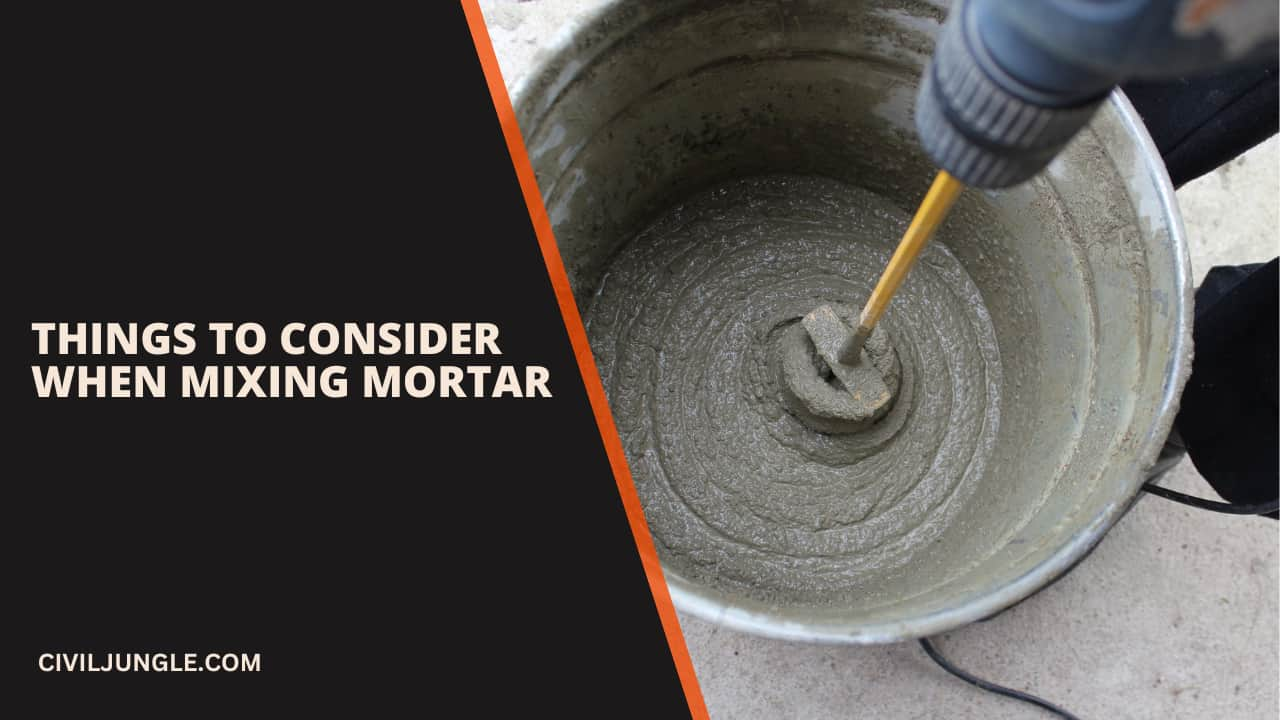

Leave a Reply